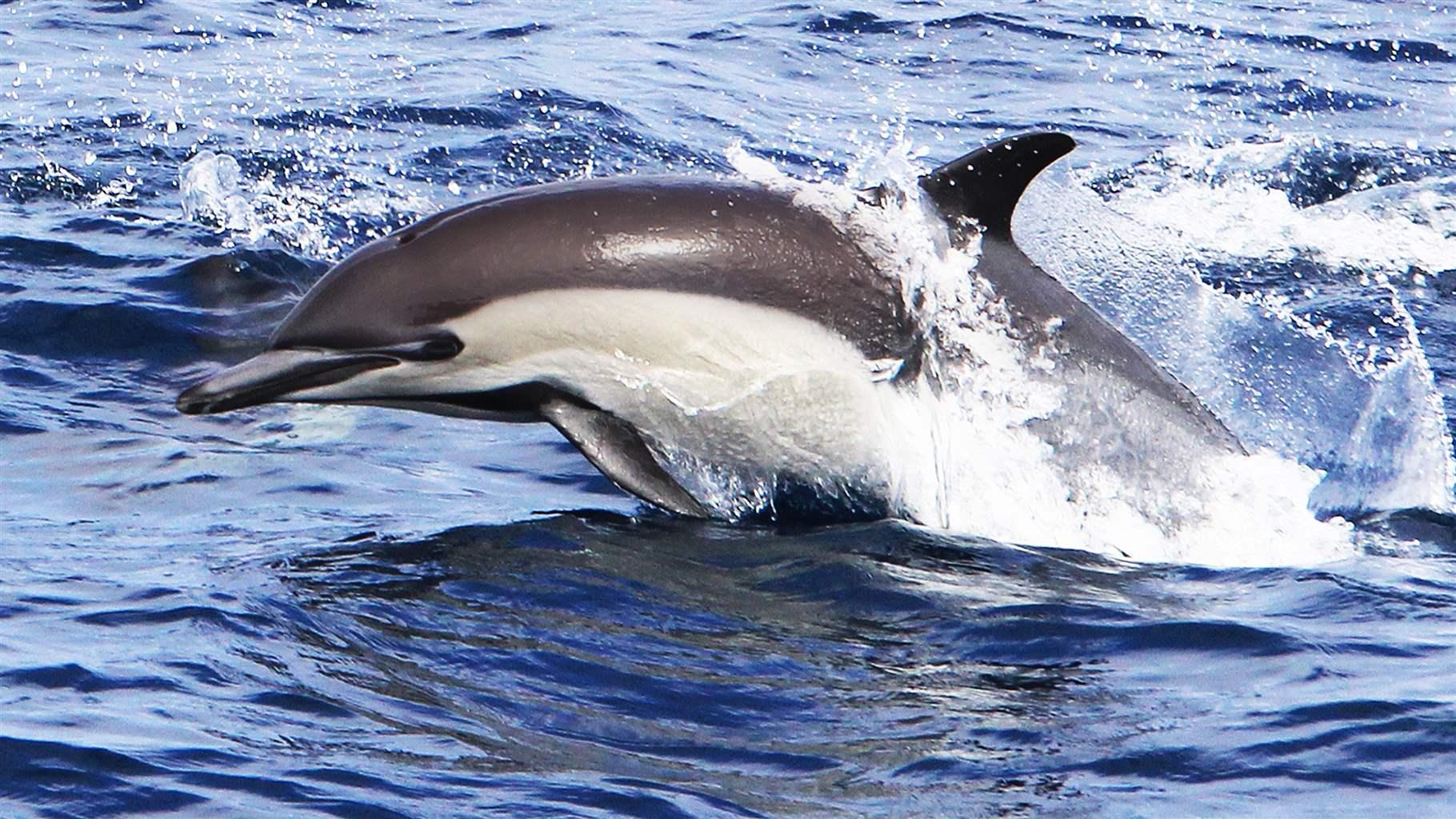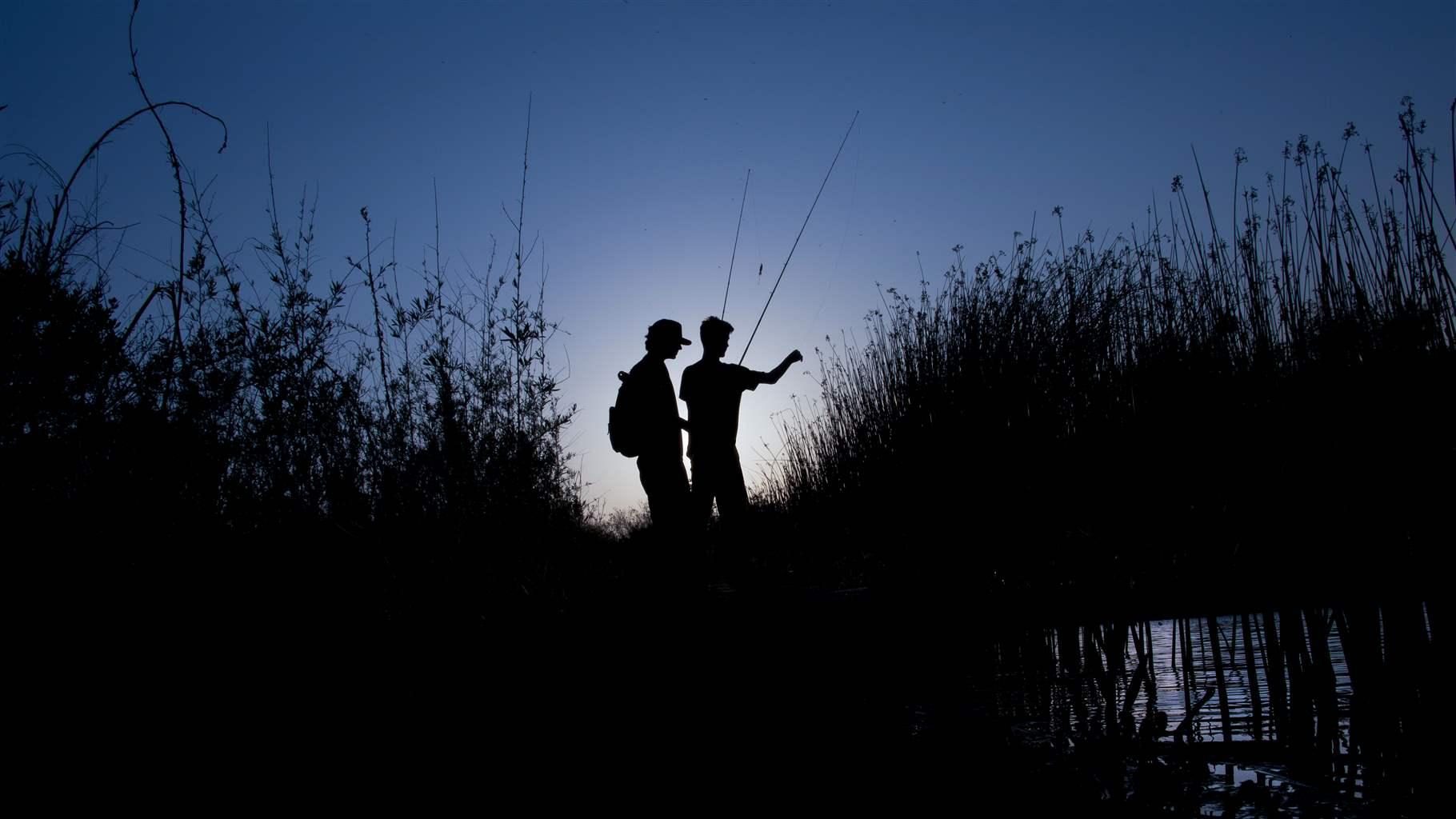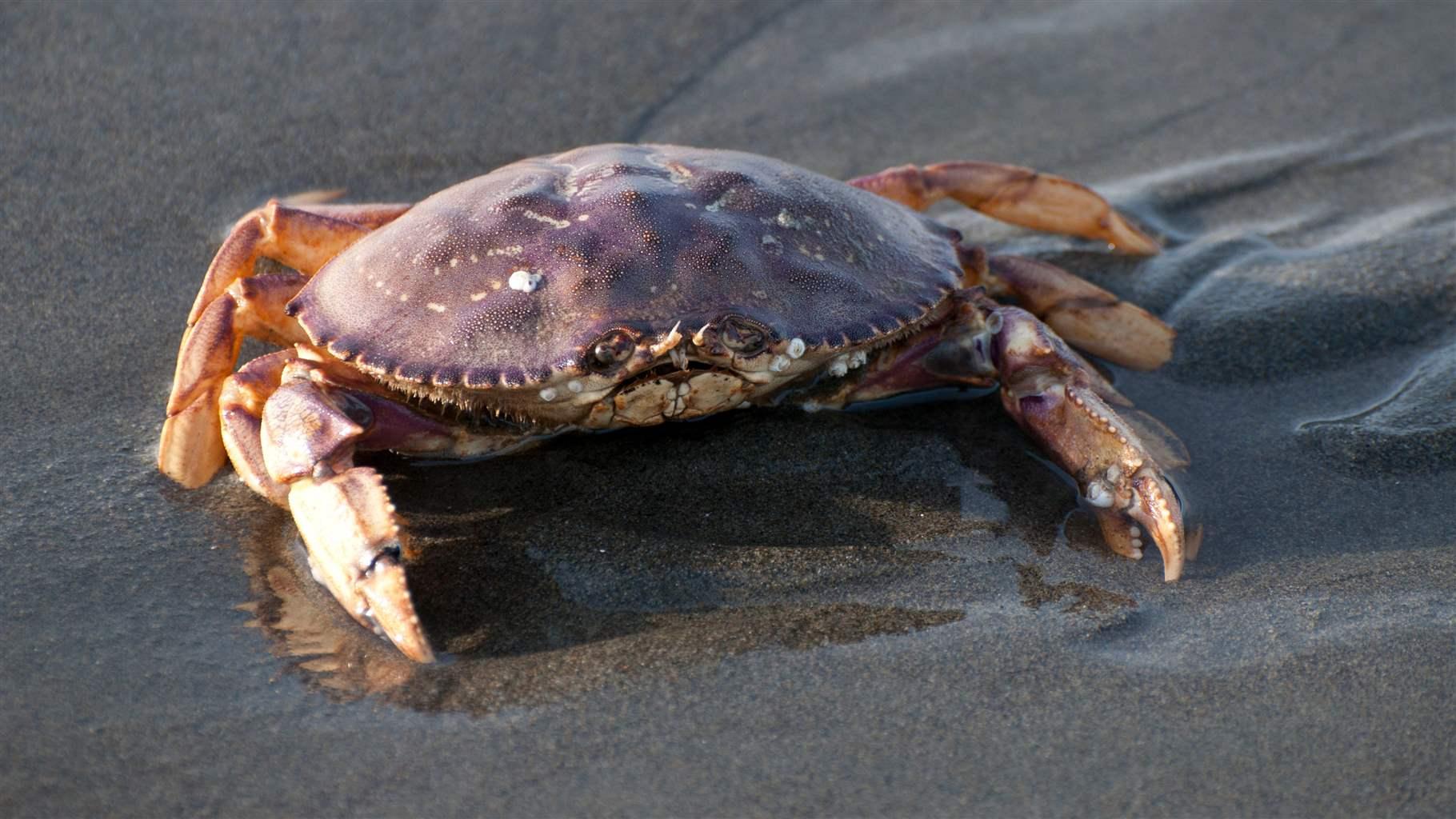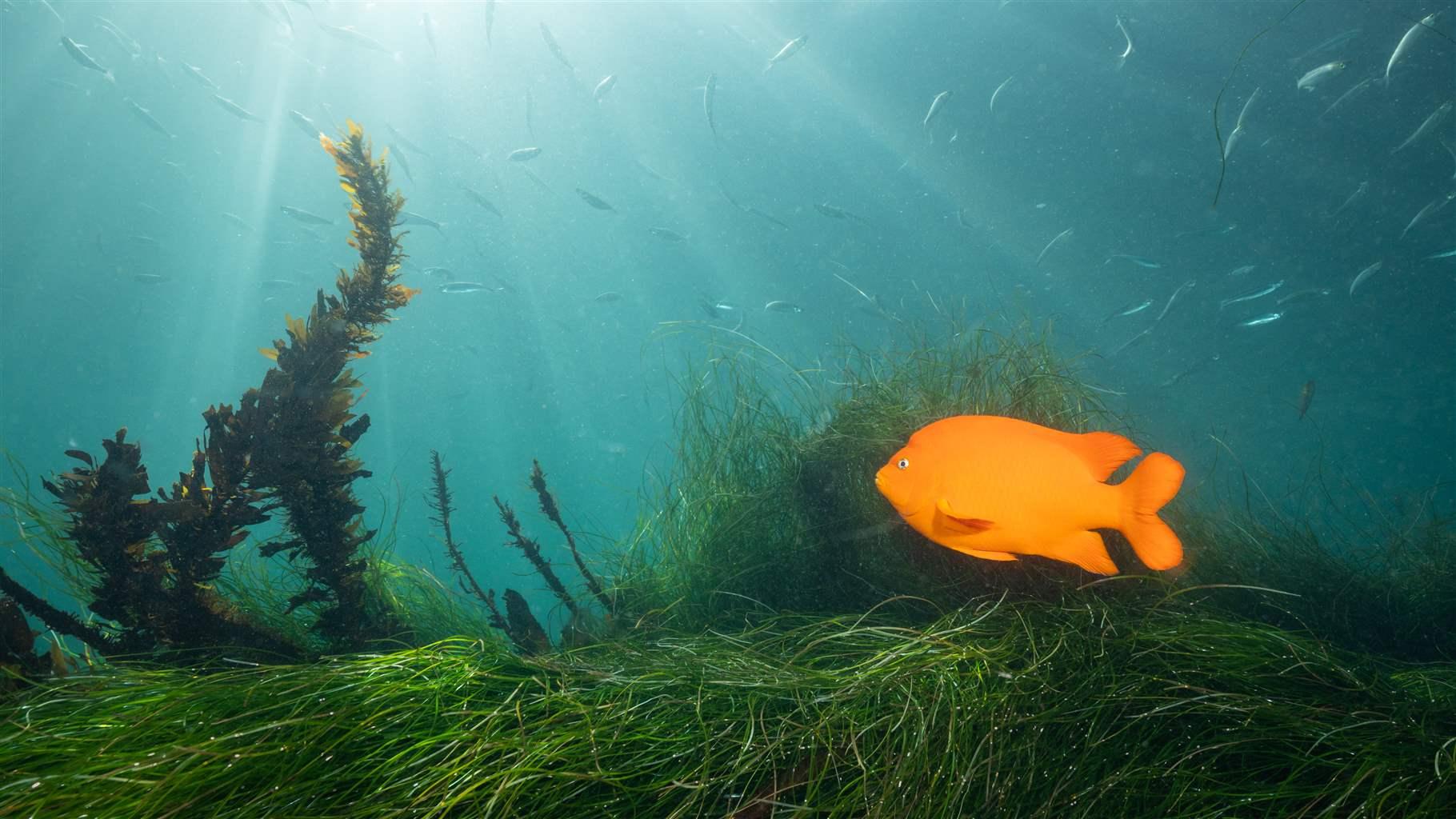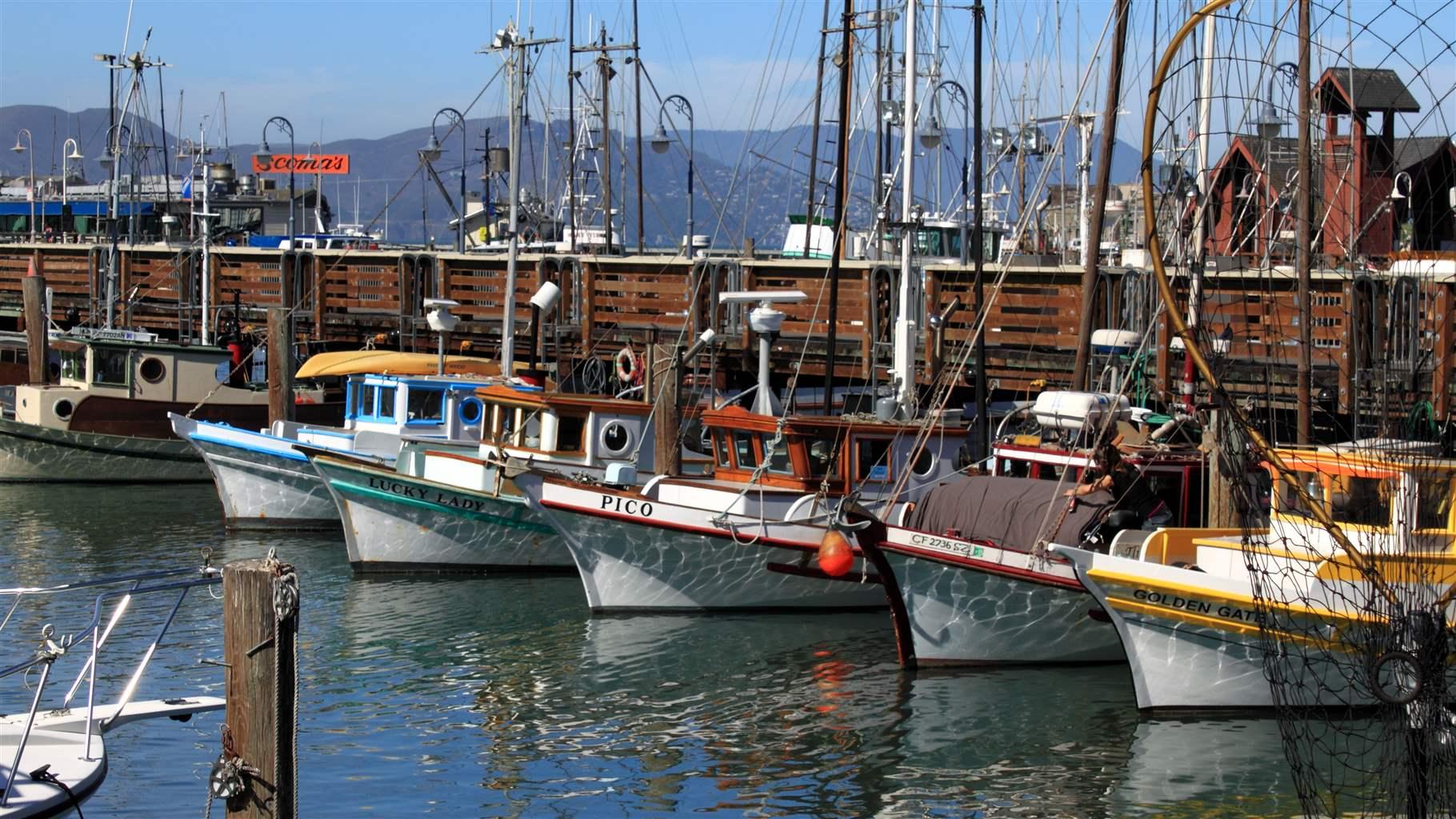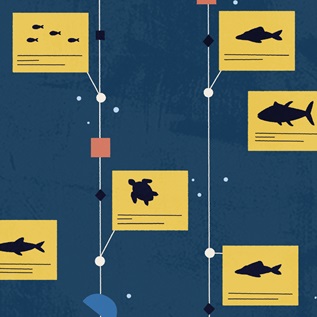5 Reasons to Modernize California’s Marine Fisheries Management
State plans can help ensure sustainable future for wildlife, fishermen, and coastal communities
California is poised to make state fisheries more sustainable as it prepares to create or update management plans for dozens of commercially and recreationally important species, including California halibut, pink shrimp, kelp bass, and ridgeback prawn. Here are five reasons why people who care about commercial and recreational fishing, marine wildlife, and the communities that depend on a healthy Pacific Ocean should support—and participate in—the effort.
Bycatch
Set gillnets and trawls, such as those used in California’s commercial halibut fishery, can result in the injury and death of marine mammals, sharks, seabirds, and many other species. Trawls also can damage seafloor habitat. California has been a leader in the effort to reduce bycatch associated with the large-mesh drift gillnets used by the federally managed swordfish fleet. Now it’s time to extend this leadership into state waters by reducing bycatch in the California halibut fishery. A comprehensive state plan for the species can help achieve this goal.
Sustainability
Some subpopulations of California halibut may be declining, based on recent studies—a trend that could threaten these stocks and the opportunity to fish for them. It’s vital California’s coastal waters continue to support thriving marine life far into the future. That requires taking steps now to make sure fisheries are managed with the future—and the entire ecosystem—in mind.
Climate change
Warming waters and ocean acidification are already having a significant impact on California’s marine wildlife. Developing new fisheries management plans or updating existing ones can help ensure that key species have the greatest chance of adapting to changing ocean conditions. By accounting for climate change in these plans, California fishery managers can take steps now that will increase the resilience of fish populations and the ecosystems they depend on.
Habitat protection
Fish need healthy habitat, such as corals and sponges on the seafloor and kelp and eelgrass closer to shore. In addition to providing food and shelter for fish, eelgrass meadows and kelp forests improve water quality, stabilize shorelines, and provide other benefits to the larger ecosystem. Smart, forward-looking management plans can protect these vital areas from damaging fishing practices, thereby helping to sustain future generations of both fish and fishermen.
Economic benefits
Commercial and recreational fishing are integral to California’s coastal communities. So are healthy ocean ecosystems, which provide invaluable services to people throughout the state. Thoughtful management of key marine fish species can help support tens of thousands of jobs and keep these communities thriving into the future.
Jennifer Browning is a director and Gillian Lyons is an officer with The Pew Charitable Trusts’ project on conserving marine life in the United States.
